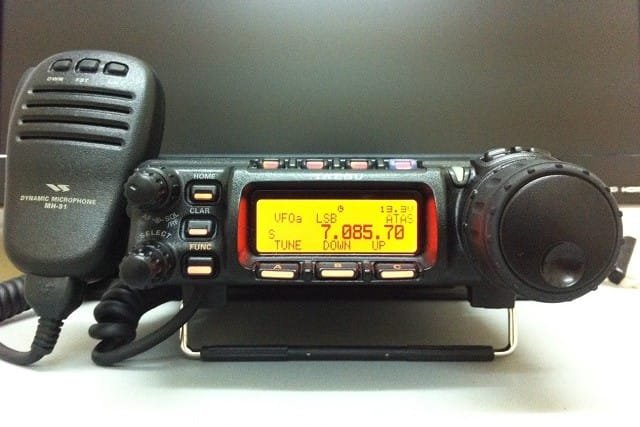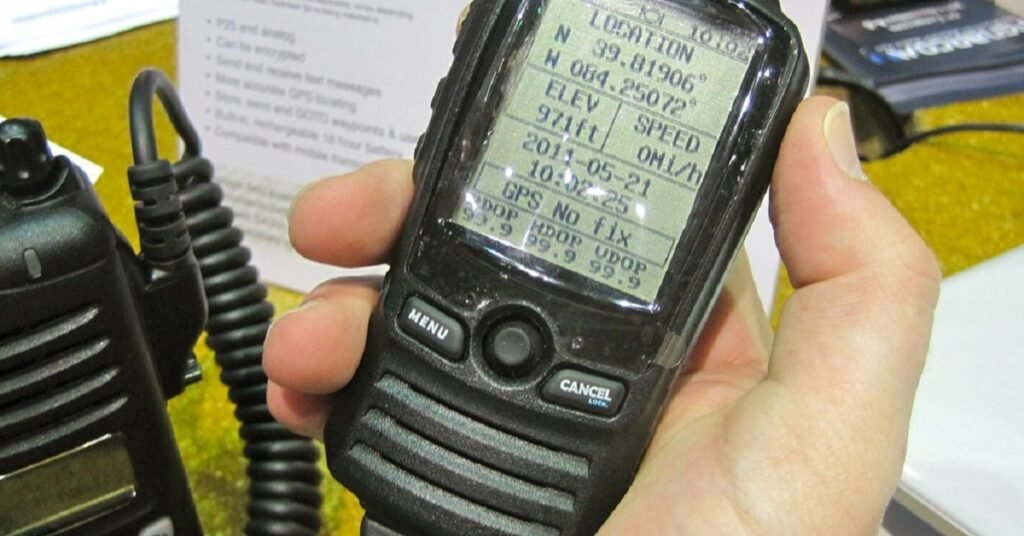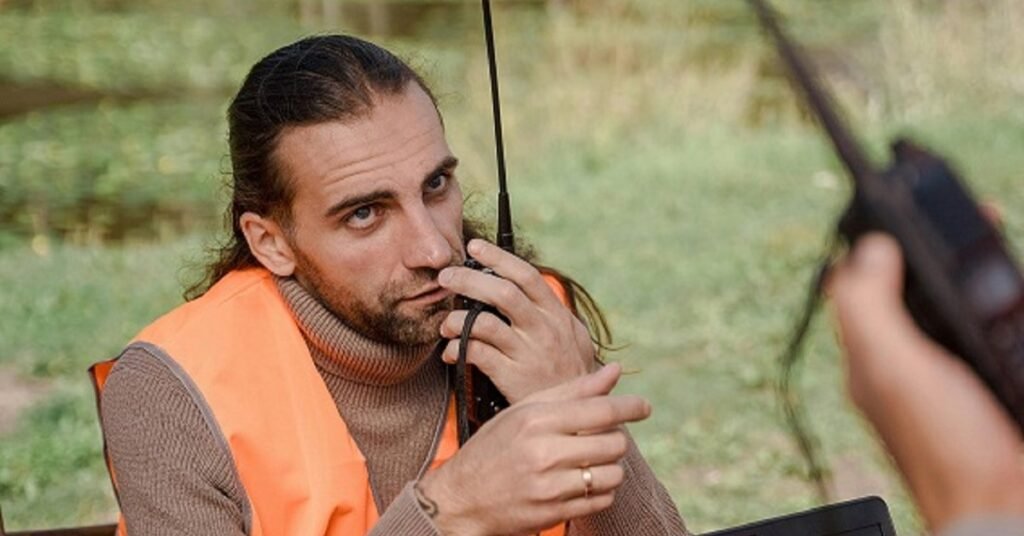Table of Contents
ToggleTwo-Way Radio Privacy Codes: CTCSS vs. DCS the Key Differences
Hello all my fellow two way radio geeks. So welcome back to TalkieTrail and our all-in-one location for everything two-way radio. So hopefully for some of you, we will save you much frustration today and talk about the nuts and bolts, differences in CTCSS vs DCS. I know, you are probably thinking. Those acronyms seem scary but do not worry! When you are done with this book, you will know what they are and how each works together to benefit your two-way radio requirements. Believe me, and knowing these privacy laws is essential if you want to keep the channels pure and your conversations private.
What Are Privacy Codes, Anyway?
Before we go into the debate about CTCSS vs. DCS, let’s define privacy codes. Consider them secret keys that enable communication between two-way radios. Our ham radio device can only connect and listen if the privacy code of our device matches with the other device or devices we want to communicate with; otherwise, we cannot connect or communicate. This capability is very beneficial when you’re working in busy places when numerous users are sharing the same frequency. But here’s the catch: while privacy codes lessen interference, they do not encrypt your communication. It’s possible for someone else using the same code to hear your discussion. Therefore, privacy standards don’t guarantee complete seclusion; instead, they work to filter out unnecessary noise.
Wondering if others can hear your conversations if they want to? Click here for details and solutions.
CTCSS: The Old-School Cool

Now first we are going to discuss the Continuous Tone-Coded Squelch System which is called CTCSS in short by hams. This technique is the grandfather of privacy codes, having existed for quite some time. Despite its antiquity, CTCSS is still commonly employed in two-way radios, particularly analog ones. Here is the lowdown:
How It Works:
CTCSS utilizes one of 38 distinct low-frequency audio tones. There is a range of tones from 67.0 Hz to 250.3 Hz. When you broadcast, a sub-audible tone is also emitted over your ham radio or walkie-talkie. If another device on the same channel is set to precisely the CTCSS tone, the squelch will open and you will be able to hear the transmission. Otherwise, it remains calm.
Key Benefits:
The primary advantage of CTCSS is its simplicity. It’s easy to set up and you’re less likely to get lost in a sea of options because there are just 38 basic tones. It is also compatible with a variety of radios, which makes it the go-to option for clients looking for straightforward, uncomplicated communication.
Common Uses:
CTCSS is commonly found in recreational radios used for hiking, camping, and road travels. It is also extensively utilized in various analog systems including public safety communications.
But, like any technology, CTCSS has limits. With just 38 tones, there is a larger risk of interference in crowded areas where numerous radios are in use. Here’s where DCS comes into play.
DCS: The Digital Dynamo

Now let’s speak about DCS, or Digital-Coded Squelch. If CTCSS represents the tried-and-true, classic method that has stood the test of time due to its dependable and traditional approach, DCS emerges as the modern marvel of communication technology, offering a chic and refined substitute with cutting-edge functions and enhanced efficiency. DCS manages communication by digital codes rather than analog tones. This explains why it’s so crucial.
How It Works:
DCS uses over 100 digital codes to differentiate different conversations on the same frequency. Push-to-talk (PTT) button on your Walkie Talkie or Handheld Radio with which you deliver continuous digital data about my voice. This will send the signals concurrently. From here, we can visualize a signal arriving at a different radio that is also set up with the same DCS code.
Key Benefits:
Flexibility is the biggest benefit of DCS. Because there are over 100 codes to select from, possible interference will be minimized. DCS is compatible with both digital and analog radios in case more powerful communication begins to be carried out digitally.
Common Uses:
In professional and industrial settings where reliable, uninterrupted communication is necessary, DCS is becoming more and more popular. High-end consumer radios with advanced privacy coding features may also have it.
CTCSS vs. DCS: The Showdown
So, how do CTCSS and DCS compare to each other? Here’s a brief comparison to help you determine which one best meets your two-way radio needs:
| Feature | CTCSS | DCS |
|---|---|---|
| Type | Analog | Digital |
| Codes Available | 38 standard tones | Over 100 standard codes |
| Interference Reduction | Good | Excellent |
| Usage | Primarily analog radios | Both analog and digital radios |
| Setup Complexity | Simple | Slightly more complex |
| Compatibility | Widely compatible with many devices | Increasingly compatible with modern devices |
Choosing the Right System for You

Choosing Between CTCSS and DCS – Now that you have the differences between them, it is time to choose. So, what technology to use for your two way radio? So here are some things to consider, listed in order of importance:
Environment: Where Will You Be Using Your Radio?
If you’re operating in a congested radio environment, such as a popular event or a highly populated metropolis, DCS may be your best option. With more codes accessible, DCS minimizes the probability of interference from other radio users, allowing you to focus on your discussion without interruptions.
On the other hand, if you are only using your two way radio in a casual environment such as on a hiking vacation or family road trip CTCSS could do. It is also the most casual-user-friendly as it works with more systems and is very simple to use.
Even if you do everything right, how far can mobile walkie-talkies really connect? Check here for the answer.
Equipment: What Gear Do You Have?
Make sure that your radios support CTCSS, DCS or a combination of the both before deciding on any one. Currently, most two-way radios will work with either system giving you the luxury of choosing what works best for you. But if you have an older, or more basic radio then all it will work on is the CTCSS.
Confused about which one meets your needs? To get a better understanding about VHF and UHF two way radios click here. Learn more about advantages, disadvantages and which one to use. This will give you a proper instruction which to choose according to your transmission area and needs.
Ease of Use: What level of comfort do you have using tech?
Some of us just want to grab that radio and check out. The CTCSS friends If you want it and not a fuss, the more straightforward almost non-setting way is to go with CTCSS. It’s easy and you will not spend a long time searching menus and settings.
And on the other hand, if you’re tech-savvy and willing to do some more setup for better performance it might be worth looking into DCS. Providing a more advanced two-way radio experience (especially in harsh environments) the new generation uses denser code with additional codes and is capable of better interference protection.
Future Proofing: Planning for Tomorrow
Thinking ahead? As digital radios become more ubiquitous, DCS gains popularity. If you want to improve your gear in the future, going with DCS may make sense. It provides greater versatility in both analog and digital settings, allowing you to expand as your communication demands change.
Do you have a larger plan for the long term? Now we are going to learn how many walkie-talkies can be connected together. Here you can click and go for the details.
Subtle Differences: Breaking Down the Technical Nuances
Let’s go deeper into the technical features of CTCSS and DCS to better comprehend their small distinctions.
Subtle Frequency Differences
One of the primary distinctions between CTCSS and DCS is how they manage frequency. CTCSS uses a single, sub-audible tone that is sent constantly during the transmission. DCS, on the other hand, encodes digital data into the signal at predetermined intervals. This slight distinction implies that DCS is less susceptible to interference from both natural and artificial sources, making it more reliable in settings where radio noise is frequent.
Code Flexibility and Error Handling
DCS is also more versatile in terms of error management. Because it employs digital encoding, it can identify and repair tiny transmission mistakes, resulting in clearer communication. CTCSS, as an analog system, lacks this feature, resulting in occasional static or dropouts in loud situations.
Conclusion: Making the Right Call for Your Two-Way Radio
With regard to two-way radio communication, it is important for you to grasp the differences between CTCSS and DCS in order that an informed decision might be made. There is a privacy code system that will work for you whether you want the simplest solution and broadest compatibility or need elaborate interference protection options long term.
By considering your surroundings, equipment, and convenience of use, you can select the best method to maintain your conversations clear and frustration-free. So, the next time you’re out in the field—or simply hanging out with friends—you’ll know exactly which system to employ to ensure your two-way radios are performing optimally.
Thank you for watching this episode of TalkieTrail! Do you have a preferred privacy code system or a recommendation for other users? Simply leave a comment below; we would be delighted to hear from you! Stay tuned for more professional guidance, technical insights, and all things two-way radio. Keep the airwaves humming, stay informed, and stay connected!


